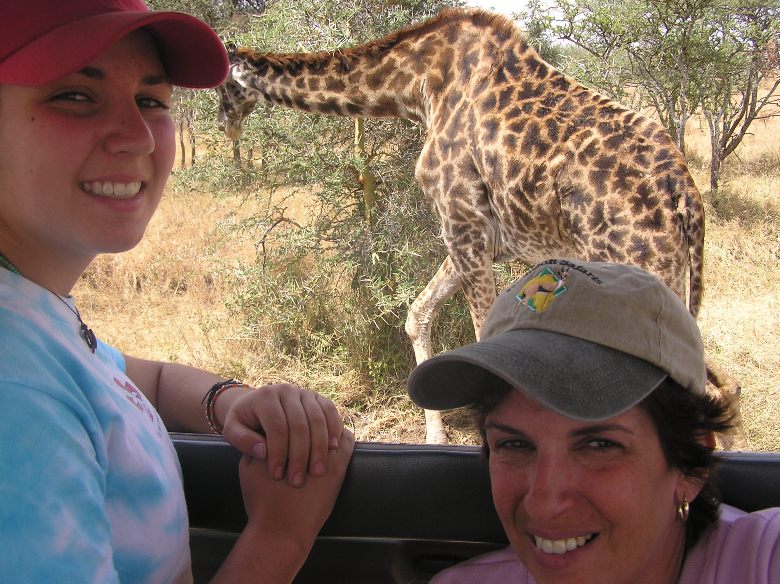A memorable trip: to Africa and a safari

We’re looking for a leopard.
“ELEPHANTS—10 O’Clock!!”
We jump up, cameras and binoculars at the ready, peering through the Land Rover’s open top as the babies and their mamas slowly make their way to a favorite watering hole. They ignore us as we snap away.
Before the day is out, we’ve braked for zebras crossing the road, baboons swinging from trees, giraffes nibbling on leaves, impala snacking on the grass, a lioness and her cubs, and countless colorful birds. But no leopard.
Welcome to Tanzania’s Serengeti National Park, at 5,700 square miles bigger than the state of Connecticut and home to some of the largest prides of lion in East Africa as well as these other animals. But unlike Disney World, there’s no guarantee when or if a leopard—or any animal–will show up on cue. They’re certainly not on our timetable. In fact, we’re the interlopers here. It’s as if we’ve stumbled into the reality version of the Lion King and with no phones, computers or even newspapers, we find ourselves slowing down and focusing on the rhythm of this amazing animal world that continues just as it has for thousands of years.
Many families opt to go to Africa over the Christmas holidays, signing on for special kid-oriented safaris with outfitters like WildlandAdventures, Abercrombie & Kent, Austin Lehman Adventures and Thomson Family Adventures.
We’d signed on for a nearly two-week Thomson camping safari that would take us deep into three of Tanzania’s famous national parks—Serengeti, known for the annual migration of the wildebeest, Ngorongoro Crater, where some 30,000 animals roam wild on the 102-square mile crater floor, and Tarangire, with 3,000 elephants. We spent one night at a coffee plantation where we spy an elephant in the huge vegetable garden. The entire trip is full of surprises like that.
For this memorable trip with my daughter Reggie, then 18 in 2004, we’d chosen Boston-based Thomson because they specialize in showing Americans Tanzania and in fact helped spearhead tourism here more than 20 years ago. Before the safari, we climbed Kilimanjaro with Thomson too. Another appeal: Thomson clearly gives back to the country, establishing a charity that helps build new classrooms. We visited Ng’iresi, a small rural village of 600 families where we see the classrooms our tourist dollars have helped build and meet the children who go to school there.
Because Tanzania, the largest country in East Africa with some of the best game viewing, is perceived as safe, it is often a destination of choice for American families.
We camped in and around the parks, but we certainly weren’t roughing it, not with beds covered with quilts in these spacious walk-in tents. There were “outdoor” living room spaces with big cushions, board games and books and pick up soccer games before dinner.
There may not be electricity but there are woven mats on the floor, private portable toilets and wonderful bucket showers filled with hot water by the obliging staff whenever we ask. Our meals were served on china with cloth napkins and tablecloths (pumpkin soup anybody?) At night we sat around the campfire sipping wine and Kilimanjaro lager beer, on occasion talking about which animal we’d want to be.
We go to sleep listening to the chatter of hyenas and monkeys. On our last morning, we find the Maasai guide, his spear at his side, warming himself at the fire.
But the leopard eludes us.

